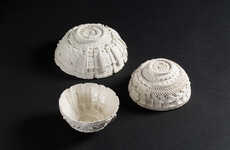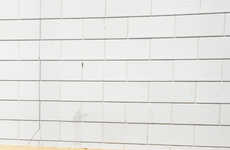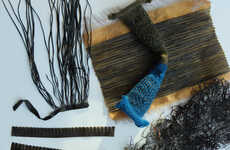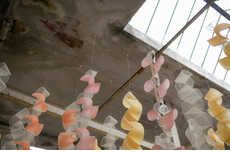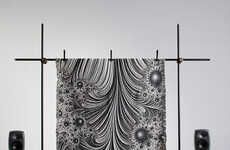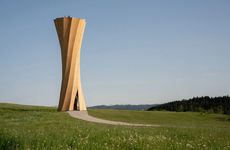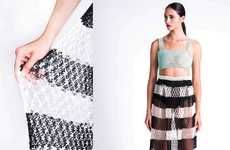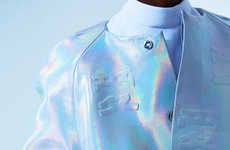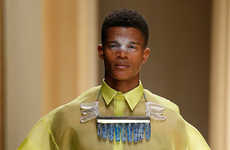
Chimera by Shai Langen Manipulates Latex and Calcium Nitrate
Laura McQuarrie — July 10, 2014 — Unique
References: shailangen & dezeen
'Chimera' is the name of the graduation project by Shai Langen, a student at the HKU Utrecht School of Arts. The unusual textile project involved creating new materials with combinations of liquid latex and calcium nitrate, experimenting with the viscosity of the two materials.
As a result, the unique collection consists of garments that were formed by different ways of dripping the material onto surfaces. The new textile looks like the organic cellular structures found in nature, making the pattern totally irregular. To wear, the finished material is described as "a colored, fermented dough that is smeared over the body then stretched and pulled apart by movements of the wearer." In a sense, Langen's garments, much like those who are wearing it are alive and in motion.
As a result, the unique collection consists of garments that were formed by different ways of dripping the material onto surfaces. The new textile looks like the organic cellular structures found in nature, making the pattern totally irregular. To wear, the finished material is described as "a colored, fermented dough that is smeared over the body then stretched and pulled apart by movements of the wearer." In a sense, Langen's garments, much like those who are wearing it are alive and in motion.
Trend Themes
1. Organic Textile Creations - Experimenting with unique combinations of materials, like liquid latex and calcium nitrate, can result in the creation of organic and irregular textile structures that mimic the patterns found in nature.
2. Body-integrated Textile Design - Garments that are formed by dripping materials onto surfaces create a unique woven texture that assimilates with the wearer's body movements, leading to the development of innovative textile designs that are seamlessly integrated with the human form.
3. Fluid Bio-mimicry Patterns - Fluid movements of garments created by combining latex and nitrate can result in bio-inspired patterns that take on an organic and fluid form, an opportunity for the creation of sustainable textile designs that mimic natural patterns and movement.
Industry Implications
1. Fashion Industry - The fashion industry can adopt experimental textile project techniques for creating sustainable, organic bio-inspired garments that fuse fluid movements with the latest fashion trends.
2. Textile Manufacturing Industry - Textile manufacturers can explore the use of different materials and techniques with liquid latex and calcium nitrate to develop innovative textile designs that mimic organic patterns found in nature.
3. Art and Design Industry - Incorporating experimental techniques like fluid bio-mimicry and body-integrated textile design can lead to inspirational textile designs for art installations and museum exhibits.
4
Score
Popularity
Activity
Freshness



